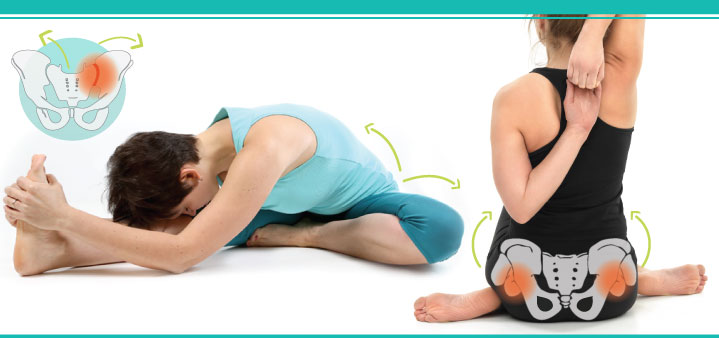How to prepare the body and mind for meditation

My first serious yoga teacher training was a residential one, where I lived in a yoga community for about a month, focusing on nothing but yoga. It was fun for the most part 🙂 Every morning would begin with Shatkarma (yogic cleansing practices), pranayama, and meditation. I wasn’t a big fan of meditation then. I would sit there, struggling to stay awake, and give orders to my mind: “Wake up! Meditate! Stop thinking about breakfast! Stop thinking about the pain in the hip/back/neck! Meditate!” To be completely honest – it was torture. I was always relieved to hear the sound of the gong announcing the practice’s end.
My next teacher training program had a completely different approach. The main premise was that to get deeper into meditation, you need to prepare first. Sure, some advanced human beings can sink into a meditative state at the drop of a hat, but most of us need a little help. So we use asana practice to work out the kinks in the body and not to be distracted by them (it is especially important to prepare the hips for sitting and the back for maintaining the upright posture). Asana practice also helps us become present with what we are doing. At the same time, we use some sort of breath awareness and pranayama to deepen the breath and focus the mind. Traditionally, asana is used to prepare for pranayama, and pranayama is used to prepare for meditation. That way, by the time you get to meditation, your body feels stable and at ease, your breathing is deep, and your mind is focused. This is a much better setup.
Below is a 20-minute asana/pranayama practice that will help you prepare your body and your mind for meditation (meditation itself is not included in the practice; you can choose the one that you prefer). I had fun with this practice and mostly used different adaptations of one posture – Prasarita Padottansana. It gives you an idea of how much you can do with one pose. Give it a try and see whether or not this practice helps you clear your head and feel more grounded.


Scientists estimate that an average person has about 60,000 thoughts per day, and about 90% of those thoughts are repetitive. This means that about 90% of our mental activity involves spinning in circles and revisiting the same stuff over and over again. The yogis call it chitta vrtti or “the vortex of the mind.”










Olga, you rock! Thank you for all of your great articles and thank you for sharing wisdom so logicaly! <3 Your raving fan, Sandra 😉
Thank you Sandra!
Im a martial art student and while doing a standing front split fully i heard a huge pop sound as if my hips were dislocated. My partner was lifting my leg and he dropped in shock wen he heard such sound.I cud not walk , sit, or even sleep properly. I feel an enormous pain whenever i try to bend forward. I cant even bend or keep my legs straight at all, i hurts me. Is there any exercise for this. Please help me with this. Thank you.
Hi Arjun, so sorry to hear that! Sounds like a hamstring injury. It might be a good idea to rest it for a while and then begin the recovery process. Just be prepared that it might take a while. You can try this practice, progressing very gradually so that you don’t re-injure it again: http://sequencewiz.org/2015/02/13/yoga-for-hamstring-pain/ I hope it helps!
Same here! When I started Yoga at a very young age meditation was the most boring thing for me as well!
Many years later when I came to know this tradition, it not only became easier, it also became a very exciting (if I can use that word in that sense) thing to do, something I would look forward to!
Just after looking at the class design and not having it practiced yet, wouldn’t it be a good idea to counter the weight-bearing standing with Urdhva-prasrt-padasana before sitting in meditation?
Hi Klaudia, oh sure; it would also be nice to do some Bhugangasana/Vimanasana and may be a supine twist. My goal was to keep the practice under 20 minutes and I chose to focus on the energetic transition from active standing poses to more calm and grounding seated ones. Most of those standing poses are not that challenging, so technically I do not think that it’s necessary to do Urdva Prasarita Padasana, but for somebody else it might be, for sure!
This is amazing ! I loved it !! Thank you so much !!
Thank you Kalpana! Happy to hear you liked it!
I’m not a “blesser” but Olga, I bless you every time I do one of your practices! I am a yoga teacher/therapist, but often want a wise, gentle, intelligent, perfectly sequenced practice to nurture myself and to get some inspiration and learning for my small private classes. I have also been dealing with hip bursitis for a while and ALL your practices have helped as EVERYTHING is connected! I love everything about your classes.
Thank you!
I live half the time in CA and half in Israel, but would love to participate in some workshops if you are ever close by!
Hi Nicole! Thank you for your wonderful comment, it’s so great to hear! And I absolutely love how you put it: “a practice to nurture myself” because this is exactly what I strive for. I hope that my approach will continue to inspire your personal practice and your teaching because this is the biggest reward I can think of. Thank you!